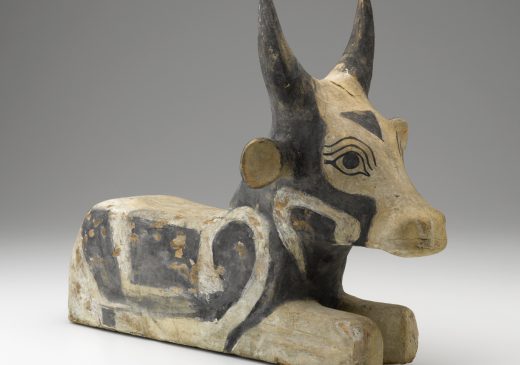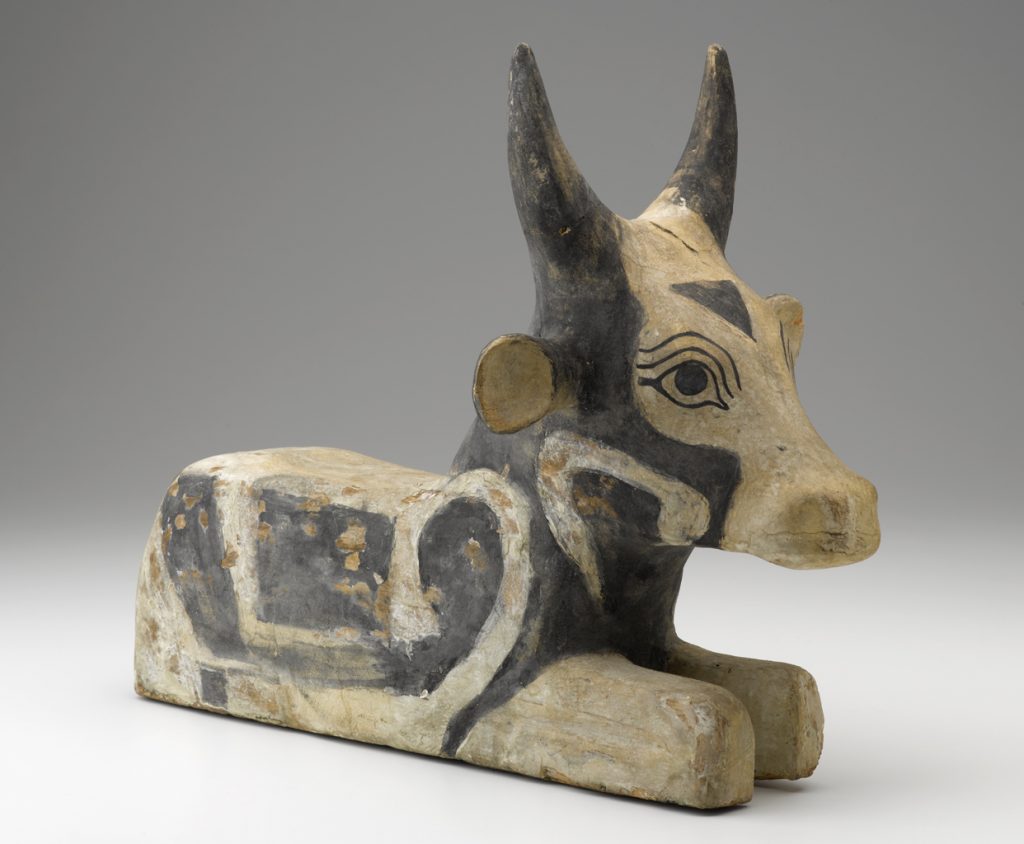Vocabulary
sculpture
Egypt
bull
recline
Materials
Wood scraps in assorted sizes, particularly some 2 x 2” chunks for necks; 2 x 4” pieces for bodies, etc. (wood scraps can be acquired for free at high school and college wood shops, Home Depot, and cabinetry shops)
small wood pieces for details such as eyes and ears (Michaels sells small packets)
nontoxic tacky craft glue (the extra-sticky kind),
butcher paper to protect table or 12 x 18” placemats for students to work on
Extension Activities for Teachers
- Create a center in classroom focused on animals.
- Once artwork is dry, have students paint their animal sculpture and add fabric, feathers, or other materials.
- Have students narrate a story about their animal sculpture.
- Have students draw a picture depicting them and their animal.
- Visit a local farm or veterinarian.
- Ask a veterinarian to give a talk to your class.
- Have library books available on animals and ancient cultures.
- Ask students to think of other materials they could use to create a sculpture. Could they use recycled objects? Play doh? Clay? Paper? Other?
Extension Activities for Families
- Make a sculpture at home from recycled objects and glue.
- Go on a scavenger hunt around your house to find sculptures.
- Find the oldest object in your house. Find the newest object in your house.
- Search for objects at home that came from other countries. What countries did they come from? Have your family members been to those countries? Share stories.
- As you move around your town or city, look for large sculptures in parks and on streets. What do these sculptures look like?
Suggested Books for Classroom Library
Gal, Susan. Into the Outdoors. Knopf, 2011. [ISBN 978-0-375-86958-7]
Hoban, Tana. Over, Under, Through and Other Spatial Concepts. Macmillan, 1973. [ISBN 978-0-329-70649-4] Currently out-of-print, this title may still be available in your school or public library.
Konrad, Maria Stewart. Getting There. Tundra, 2009. [ISBN 978-0-88776-867-5]
Rissman, Rebecca. How We Get Around. Heinemann Library, 2009. [ISBN 978-1-43292-275-7]
Rosen, Michael. We’re Going on a Bear Hunt. Illustrated by Helen Oxenbury. Simon/McElderry, 1989. [ISBN 978-0-689-50476-1]


